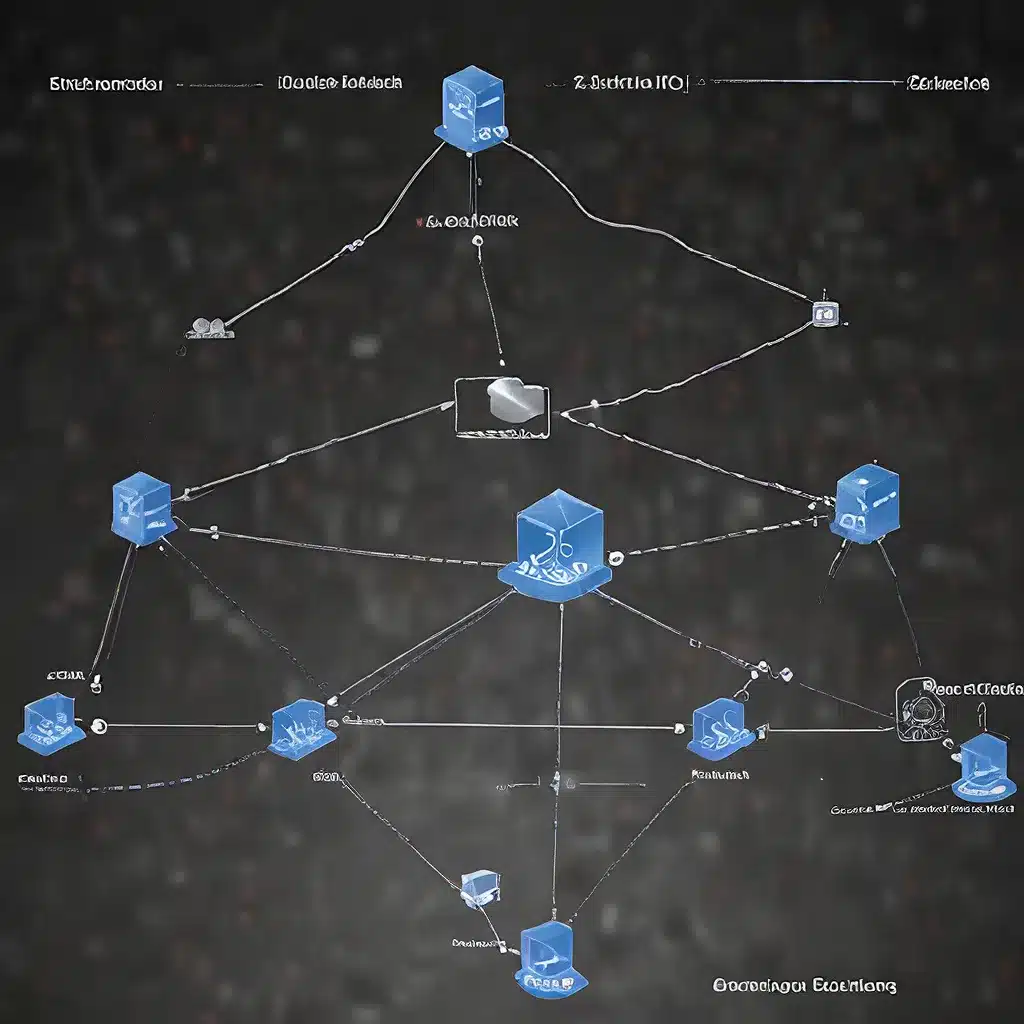
Optimizing Network Efficiency through Clustering and Load Distribution
In the rapidly evolving world of sensor networks and the Internet of Things (IoT), load balancing has emerged as a crucial concern for ensuring the longevity and performance of these distributed systems. As sensor networks grow in scale and complexity, the uneven distribution of workload across network nodes can lead to premature node failures, energy depletion, and reduced overall system reliability.
To address these challenges, researchers have explored distributed algorithms as a promising approach for load balancing in sensor networks. These algorithms leverage the inherent decentralized nature of sensor networks to achieve dynamic load distribution, prolonging network lifetime and enhancing overall functionality.
Clustering for Energy Efficiency
One of the primary techniques in this domain is clustering, where sensor nodes are organized into groups or “clusters” to optimize communication and resource utilization. Clustering achieves high energy efficiency by utilizing multihop communication, where sensor nodes within a cluster can relay data to the cluster head, which then forwards the information to the base station.
However, a common issue with clustering is the premature death of relay clusters, which can lead to network partitioning and reduced overall functionality. To mitigate this, researchers have investigated distributed algorithms that can dynamically adapt the cluster formation and load distribution within the network.
Recent studies have demonstrated the effectiveness of randomized clustering algorithms that leverage probabilistic approaches to achieve load balancing. These algorithms ensure that the workload is distributed proportionally to the capacity of each sensor node, preventing the rapid depletion of resources in high-load areas.
Distributed Hash Tables and Load Balancing
Another area where distributed algorithms have been applied is in the context of Distributed Hash Table (DHT) networks. DHTs, which are based on consistent hashing functions, inherently suffer from an uneven load distribution problem, as the workload is not proportional to the capacity of individual nodes.
To address this issue, researchers have developed load balancing algorithms for DHT networks that aim to balance the workload across all nodes. These algorithms leverage techniques such as virtual nodes, dynamic node migration, and randomized hashing to ensure that the workload is evenly distributed, improving the overall efficiency and resilience of the network.
Recent advancements in graph clustering and graph mining have also been applied to the problem of load balancing in DHT networks. By modeling the network as a graph and applying clustering algorithms, researchers have been able to identify communities of nodes with similar capacities and distribute the workload accordingly.
Securing Sensor Networks and IoT Devices
As sensor networks and IoT systems become increasingly ubiquitous, the security of these distributed systems has also emerged as a critical concern. Malicious actors can exploit vulnerabilities in sensor nodes or the underlying communication protocols to disrupt the network’s operations, compromise data integrity, or even gain unauthorized access to sensitive information.
To address these security challenges, researchers have developed distributed security algorithms that leverage the decentralized nature of sensor networks. These algorithms can detect and mitigate cyber attacks, malware propagation, and other security threats by leveraging cooperative and adaptive strategies among sensor nodes.
Energy Management and Sustainability
Another crucial aspect of sensor network design is energy management, as sensor nodes often rely on battery-powered or energy-harvesting systems. Inefficient energy consumption can lead to premature node failures, network partitioning, and reduced overall system lifetime.
Distributed algorithms have been employed to address these energy management challenges, enabling adaptive and collaborative strategies for power optimization. These algorithms can dynamically adjust sensor node duty cycles, routing protocols, and data aggregation techniques to minimize energy consumption while maintaining the desired level of network coverage and responsiveness.
By incorporating principles of energy harvesting, energy-efficient hardware design, and distributed energy management, sensor networks can be engineered to achieve long-term sustainability and resilience in diverse IoT applications.
The Future of Sensor Networks and IoT
As the sensor network and IoT landscape continues to evolve, the need for distributed algorithms that can optimize load balancing, security, and energy management will only become more pressing. With the rise of edge computing, 5G technology, and smart city initiatives, the complexity and scale of sensor networks are expected to grow exponentially.
Researchers and industry professionals are actively exploring advanced distributed algorithms that can adapt to these emerging challenges, leveraging techniques such as machine learning, blockchain, and swarm intelligence. These innovative approaches promise to unlock new possibilities for efficient, secure, and sustainable sensor networks that are critical for the realization of the Internet of Things and the smart, connected world of the future.
Stay tuned to sensor-networks.org for the latest updates, thought-provoking insights, and cutting-edge research in the ever-evolving realm of sensor networks and IoT.